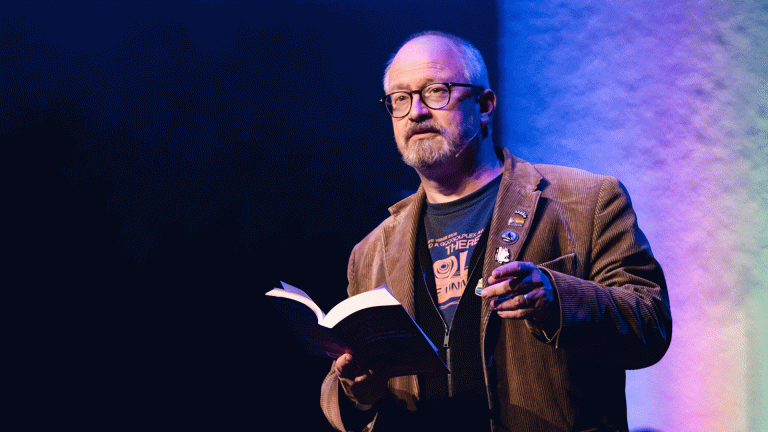But there is a slow, long fuse burning in recent times; the further you get away from the explosion of Pollock with his abstract expressionist drips, the more Krasner grows out of the shadows. She becomes her own. And a show running until September 1 at the Barbican in the City of London shows what a power is Lee Krasner.
I knew that I was moving away from the idea that Lee Krasner was little more than an imitator of her husband’s success. I had seen the odd work by her, largely in reproduction. I had realised also that there was a male conspiracy going on in the Fifties art world of New York. A conspiracy broken by the incredible power of a handful of women artists.
Joan Mitchell, the painter not the singer: enormous abstract paintings that equal anything produced by men at the time. Helen Frankenthaler, one of my favourite painters, wandering through 50 years of art unable, in my opinion, to make a mistake. And Grace Hartigan, a brilliant painter who broke away from the abstract and returned to the figurative with great aplomb and brio.
And Elaine de Kooning, who artistically cuts her own way through this world of male painters and male critics and promoters with great ease.
These painters are up there with Pollock and Clyfford Still and Rothko. Yet being women and in a time of high chauvinism they were put into a secondary spot.
Imperialism can have many faces. Going to the Krasner exhibition at the Barbican you can see the imperialism of male artistic domination. And that should not be allowed to continue another minute. Rewrite your history; realise that – in my humble opinion – creatively and artistically Lee Krasner is better than her much bigger-named husband with his ‘kettle-drum’ reputation.
Advertising helps fund Big Issue’s mission to end poverty
Desert Moon (1955) is a large painted work with torn pieces of paper stuck to the surface, and is just one of a number of giant collages that are unequalled. They are as big if not bigger than her husband’s. And the size is so important because it overwhelms. Thankfully the Barbican has the kind of big headroom that Lee Krasner’s work needs, some 7ft high. Smaller works, like Untitled (1946), show that early on she is pushing her own work its own way. Although Pollock did influence her he did not overwhelm her.
She does not become ‘derivative’ of her husband. The greatest insult you can ever hand out to an artist is that they are ‘derivative’. Everyone is derivative for a while, but most artists struggle to do their own thing. Lee Krasner achieves that in buckets full of brio and joyful creativity.
For a short period of time I might have to get ‘derivative’ and make me some vast collages of stripped paper and cloth. Certainly there would be more creative space to do that than simply
follow the dripping traditions of Jackson Pollock.
Unfortunately for Pollock, Formica, the laminate-surfaced wood derivative, was used everywhere in the late Fifties to bring instant modernity to tired old post-war Britain. And Formica was desperate for designs and images.
Advertising helps fund Big Issue’s mission to end poverty
Suddenly all over the place you could see ‘dripping’ designs in coffee bars and restaurants, where the simple application of dripped paint made things look instantly modern. Pollock soon became associated more with design in most people’s minds than with art itself.
Yet Lee Krasner did not cleave to one style throughout her working life. Whereas her husband will always be associated with a technique of dripping liquid house paint over a white canvas, Krasner does not have that signature. Hers is broad and constantly changing. And developing. In years to come I hope she will, along with Joan Mitchell, Helen Frankenthaler, Grace Hartigan and Elaine de Kooning, come to be seen as a part of that creative explosion that robbed Paris of its mantle of art centre of the world.
John Bird is the founder and Editor in Chiefof The Big Issue.
@johnbirdswords
linkedin.com/in/johnbirdswords
john.bird@bigissue.com
Advertising helps fund Big Issue’s mission to end poverty
Image: Getty









